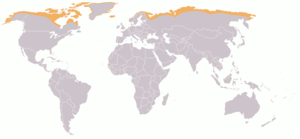Global Warming Transforming Arctic Shrubs Into Forest
(CORDIS) — Researchers in Finland and the United Kingdom suggest that the warming Arctic climate could turn existing shrubs into trees in the coming years. The finding, presented in the journal Nature Climate Change, reveals that patches of forest can emerge across the tundra, which in turn could speed up the planet’s warming. The study was funded in part by the ECOCHANGE (‘Creating conditions for persistence of biodiversity in the face of climate change’) project, which has received a Marie Curie ‘Promoting sciences’ grant worth EUR 173 400 under the EU’s Seventh Framework Programme (FP7).

Led by the University of Oxford in the United Kingdom, the researchers focused their work on a 100 000-square-kilometre area, known as the north-western Eurasian tundra, which stretches from western Siberia to Finland. Data generated from fieldwork and satellite imaging, as well as from observations made by indigenous reindeer herders, indicated that between 8 % and 15 % of the area’s willow (Salix) and alder (Alnus) plants have, since the 1970s, grown into trees that are more than 8 metres high.
Past studies that investigated the potential impact of forestation revealed that an expanding forest into the Arctic tundra could boost Arctic warming by one to two degrees by the end of this century.
‘It’s a big surprise that these plants are reacting in this way,’ said lead author Dr Marc Macias-Fauria from the Department of Zoology at Oxford. ‘Previously people had thought that the tundra might be colonised by trees from the boreal forest to the south as the Arctic climate warms, a process that would take centuries. But what we’ve found is that the shrubs that are already there are transforming into trees in just a few decades.’
According to the researchers, the transformation from shrubs to forest is important because it changes the albedo effect, which is the amount of sunlight reflected by the surface of Earth.
The tundra’s shrubs are usually covered under a blanket of white, light-reflecting snow during the spring and autumn months. Trees, however, have the height needed to fight off the snowfall, presenting a dark, light-absorbing surface. Because of the greater absorption of the Sun’s radiation, along with the microclimates produced by forested areas, global warming expands even more.
‘Of course this is just one small part of the vast Arctic tundra and an area that is already warmer than the rest of the Arctic, probably due to the influence of warm air from the Gulf Stream,’ said Dr Macias-Fauria. ‘However, this area does seem to be a bellwether for the rest of the region; it can show us what is likely to happen to the rest of the Arctic in the near future if these warming trends continue.’
The researchers said the finding could impact researchers’ efforts for modelling present and future low Arctic vegetation responses to climate change. It also stresses the potential for structurally new ecosystems to emerge from within the tundra zone.
